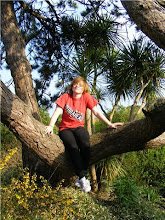Pont des Arts, and other magical beauties
The ‘Pont des Arts’ is a famous bridge, which crosses the Scine River in Paris. When you stand on the bridge you are apparently at the centre of Civilisation. On one side you can see the institute of France, a College which was built in 1670 and is a seat for education. On the other side you see the Louvre – the Palace of Art. If you look up stream then you are greeted by the Cathedral of Notre Dame. As a writer, artist – really anyone in the arts, to stand here is a dream come true. Many people have walked along the bridge just to feel inspired and take in what the city has to offer. Many great Novels have been written based on this spectacular landmark. One to note is Wilhelm Hauff’s Novel ‘Die Betterin vom Pont des Arts (1826; The True Lover’s Fortune; or The Beggar of the Pont des Arts), which he wrote while on a journey through France, Germany and the Netherlands.
Another example, of a place so inspiring the words just fling out of people’s minds onto their paper is Venice. Venice’s attributes are best described by Sergei Diaghilev, he said: “all that is real is in constant contact with magic and mystery”. There are many different explanations to this critique of Venice. Venice is built on water, reflections are darting off of the water so that you are never alone, the cobbled streets bring out the subtlety or blunt tones of your feet as the sound echoes its way into your ears and the translucence of the city toys with your vision. Just as the water will fall through your fingers so will the City. Light and darkness are never more prominent than in the Venetian City. Housing home to a magnificent cemetery that has buried the likes of Stravinsky amongst many other famous names and playing with the idea of what we see being light and dark. In terms of morality, sin, redemption etc. we are mis-led by the fact that we are enjoying the view. The patriarchal Cathedral Basilica of Saint Mark (or Saint Mark’s Basilica) is a beautiful stature. It is one that many visit but it is full of stolen property. An arsenal of stolen property, even. Venice used to be the centre of trade, and therefore the Venetian Empire took from the world anything possibly could. They claimed it was done for spiritual reasons however.
The list of novels then which are set in Venice is remarkable. A few include: Michelle Lovric ‘The Remedy’, Donna Leon’s ‘Death at la Fenice’, and Michael Didbins ‘Dead Lagoon’. If you’re interested, a man called Jeff Cotton has compiled an extensive list of Novels set in the City along with various interviews and accreditations over at: fictionalcities.co.uk/venice
Going back to the Pont des Arts, and the centre of civilisation A question over what is civilisation needs to be asked. Civilisation is something that you are born into. Like a pack of wolves they are a civilisation, despite the fact they are hunting and killing food which is considered to be ‘uncivil’ by some. There has to be a higher acceptance, or morality that the way things are being done is correct. When a breakdown in civilisation occurs and conflict emerges, we start to question the human truths. Stolen items are in these magnificent buildings in Paris, these buildings were constructed by working-class people. The higher people are accepted but the lowers are doing the work. All that being said Venice and Paris are beautiful cities that continue to enlight and motivate hundreds every day.
Subscribe to:
Post Comments (Atom)
Followers
About Me

- Tash
- I'm not religious, I beleive in equality, karma and supernatural existence.
No comments:
Post a Comment